#Ishtar is equivalent to Aphrodite
Text
Robin as a deity


Wondering what goddess or deity Robin would likely be? There are a plethora, but I think a goddess of death, fate, or scriptures. I cannot see her as Persephone, the Morrigan, or Hecate. I do see her as maybe Atropos of the Fates in Greek origin and one of the Rozhanitsy which are akin to the Fates. Atropos cuts the lives while her sisters measure the lives of mortals.
Robin may also be Morana, the Slavic goddess of Winter and Death. Many people vilify Morana because she rules over unpleasant things, but they are necessary in life much like Robin is vilified for her knowledge of Poneglyphs.
#【📖☕the blooming scholar】#【📖☕all about the lone survivor】#i see my oc Mira more as Persephone Hecate and the Morrigan#Atropos is pretty metal :u#there is ereshkigal . o . /#she strips Inana of all her divinity when Inana/Ishtar goes to the Underworld#Ishtar is equivalent to Aphrodite
1 note
·
View note
Text
🪼⨍ꫀׁׅܻ᥎꫶ׁׅꫀׁׅܻꭈׁׅ ժׁׅ݊ꭈׁׅꫀׁׅܻɑׁׅ֮ ꩇׁׅ🪼
🕊 By Harmoonix 🕊
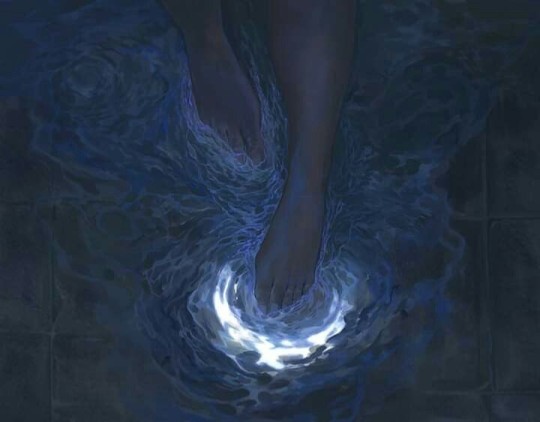

~ my heart goes la di da ~
───────────────────────────────────────
🪼 - Scorpio Risings/Scorpio Mars/Scoprio Sun are more possessive than the rest of Scoprio placements in my opinion,Scoprio Moon or Scoprio Venus will act more obsessed than posseisve
🪼 - Taurus Placements can focus on lot of finances and wealth, some things with gaining and getting from others (money)
🪼 - Where Neptune sits in your chart can indicate where you get addicted:
In the 7H, to your relationships
In your 10H, to your status, public image
In the 1H, becoming addicted to your appearance/the way you look
In the 2H, becoming addicted to money and finances
In the 3rd H, becoming addicted to communicating more, expressing yourself, addicted to creativity
In the 12H, becoming addicted to isolating yourself, hiding yourself from the world
🪼 - Mars in Virgo/6H or at 6° or 18° their charm is insane. Their body can stand out to these natives, beautiful mind and body is the definition for them
🪼 - Mars in Pisces and Sagittarius natives have irresistible charms since Jupiter rules both of these signs, the person is very liked with Mars in this position
🪼 - 12H Sun can have lots of Neptunian energy, therefore the Sun will act in "shadow", not seen so easy by others
🪼 - Lilith h12 in the 4H/9H and 12H have deep ancestral wounds, it can be generational pain as well
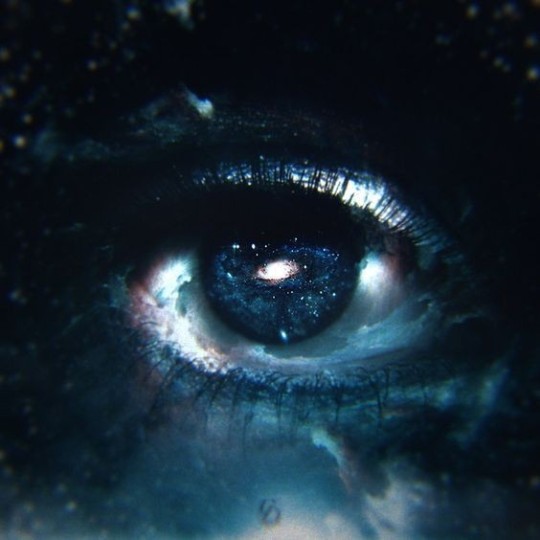
🪼- When you have Neptune/Venus or Sun/Jupiter in the 2H, you can become addicted to buying things that light up your mood and make you happy instead of simply buying them because you want them
🪼- Taurus/Libra or Pisces Risings/Moons are like a piece of art, ready to be set up in a museum
🪼- Capricorns can be night owls. If you don't know, the meaning of night owl is when a person is more productive at night instead of being productive during the day
🪼- When you have Neptune in the 1H/Neptune aspecting the ascendant, you can have doubts about yourself, like you can think youre not beautiful or that youre not liked because soemtimes Neptune makes illuions and fake scenarios about things that may actually not be real. You are very beautiful and sometimes you cannot see it
🪼- Uranus in the 7H can bring an awkward situation when you'll meet with your partner/spouse
🪼- Lilith in the 4H/10H can actually indicate being judged by the family or feeling like the black sheep. Especially from the father side of the family (Mother side can be too)

🪼 - Mars in the 8H i think is one of the most sensual houses to have Mars in. Everything is so sexual right there
🪼 - Taurus/Venus in the 3rd house gives you a very harmonious relationship with your siblings (in case you have)
🪼 - Lilith in Aquarius is the place where Lilith doesn't want to be like others and it can sound corny but she is just feeling different than the rest of the world
🪼 - Venus in Capricorn may actually need a lot patience in their relationship, you're waiting but for a reaosn, to find something better
🪼 - Sun in the 9H can be the person to change their spiritual or belief system a lot in their lives, they wanna try and experience different things
🪼 - Asteroid Ishtar (7088) is said to be equivalent to Asteroid Aphrodite so aspecting the ASC/MC can indicate surrounding yourself with beauty

🪼 - Having the ruler/lord of the 6H in the 12H can indicate that the pets you have in this life time can be family members from a past life
🪼 - Pluto aspecting the Asc/Sun or Moon gives you the "detective" aura, you can find yourself being interested in crime series or crime novels
🪼 - Cancer Guys especially Cancer Sun/Rising Guys can be momma boys,so when you date them make sure their momma won't come between u 2
🪼 - Venus in Cancer/Venus in the 4H are the best placements to have if you want to raise a family or an entire generation
🪼 - Asteroid Bless [92891] and what you were blessed with:
In the 3rd - with great siblings/brotherhood comfort
In the 10H - with a good career or job/public image
In the 11H - blessed with finding the community you belong to
In the 2H - finances/money/security
In the 9H - with a great background/ancestral background/with a good learning skill
In the 1H - blessed with your appearance/the way you look
🪼 - Asteroid Aura 1488 aspecting Sun gives the aura of a young soul, someone very kind and light hearted
🪼 - Aura 1488 aspecting Mars gives the aura of an ambitious/brave/bold person, influential aura
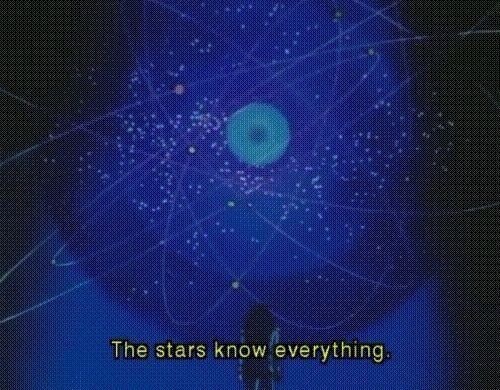
🪼- Aura 1488 aspecting Jupiter gives the aura of a four-leaf clover, very wise, spiritual, intuitive is giving shaman/wizard vibes
🪼 - The rising you have in your D9 chart (vedic astrology) is the energy you'll embody a lot in this life, for example I have Cancer Rising in my D9 chart and I have to focus on things that make me more comfortable and secure just like a Cancer 👁👄👁
🪼 - Virgo + Aquarius combo in your chart can tell about a very intelligent native, clear mind, good personality and charming
🪼 - Gemini + Leo combo in your chart can tell about a person who is always thinking at others more than anything, caring, generous, and social/popular
🪼 - Jupiter in your 4H/9H can indicate leaving your home country and flying to another maybe for a better life or whatever reasons, it indicates some moving when you were a kid
🪼 - Taurus Saturn/Saturn in the 2H are rarely talked about, I think Saturn here wants to teach the native to spend their money carefully on things so they can be 100% fulfilled of their purchases

🪼 - Saturn in the 6th/12th Saturn at 6° 18°,12°,24° degrees, this is a very healing placement, but one tool to use to heal yourself is literally the sleep, trustttttt me, if you feel sad try to sleep, if you had a bad day try to sleep it will make you feel much better! The sleep can actually heal you.
🪼 - Saturn in Gemini/Saturn in the 3rd house will give you "freedom of speech", your voice is very powerful and you can help people with it
🪼 - Pluto/Lilith in the 11th house can talk about being different from your group of friends, you can have something not everyone will accept in their friend group
🪼 - When you have Jupiter harshly aspecting your Sun you can often think of bad luck happening to you
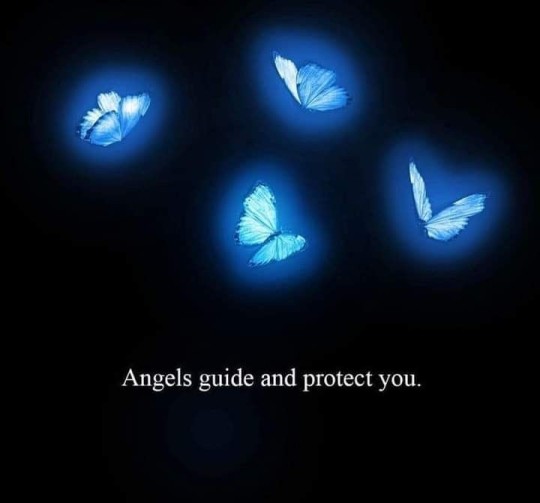
🪼 - When you have Saturn in Sagittarius or in the 9H school can sometimes drain you the most, especially some teachers as well
🪼 - Mars in the 9H can actually tell of tense situations with teachers and in school generally (Mars in Sag and Mars in 9° and 21° can as well)
🪼 - Chiron in the 1st/2nd houses can not always the best relation with their bodies, is a slow journey but with good results, if you want that of course
🪼 - Venus in the 10th/Capricorn can sometimes put work before relationships, especially after a breakup omg, they gonna focus much more on work than ever


🦋 Connecting Yourselves to the source 🦋
#astrology#astro observations#birth chart#astro notes#astrology observations#placements#astro community#horoscope#ascendant#venus#astroblog#astro.com#astronote#astro#astroseek#d9 chart#vedic chart#vedic astrology#notes#new observations#post#new post
2K notes
·
View notes
Text
Bharani : the birth of Venus.
Part 1

Let's talk about ancient godesses of love and Bharani nakshatra.
I will base my research on the legend of the dead and resurrected god present in many religious myths coming from the middle east (ps : i'm sorry in advance for the grammar, syntax or spelling mistakes that you may find in this post, english is not my first language)
Bharani, situated in the heart of the rashi of aries is governed by Shukr: Venus but also by Yami and Yama in vedic mythology who are twins and gods respectfully of life and death.

Yama, the main deity of Bharani is said to be one of "8 celestial gatekeepers, who guards eight directional doorways or exits through which souls travel from an earthly plane to other planes of existence" making him the lord of Dharma since at one's death, he decides basing on his actions in what plane should one reincarnate.

Since Yama is responsible for directing the flow of life on Earth the association between bharani and the yoni becomes evident: the female reproducting system serves as a portal for souls to take on a physical form. So bharani as Claire Nakti perfectly described it relates to the feminine ability to receive, hold, nurture and ultimately transform through the womb.
Because Bharani aligns itself with all the feminine qualities by excellence it makes sense as to why Venus is it's ruler.
Venus is the roman name for the goddess Aphrodite: in greek mythology. She is said to be the goddess of love and beauty at large but also the goddess of war and sexuality. First because the ancient greeks saw the duality that links love to war and how they seem to come together through sex.
Also, Aphrodite is said to be born from the sperm of Ouranos when his testicules got cut by his son Saturn as he was always feconding Gaia, the Earth and causing her distress: he was acting cruel regarding their children. The sperm of Ouranus got mixed up with the foam of the Ocean creating Aphrodite which means "risen from the foam". So it was interesting to see that as Shukr also means sperm in sanskrit and it shows the origin of Venus as a fertility goddess too.

This conception of Aphrodite directly links her to ancient goddesses of love such as Ishtar or Inana in Mesopotamian/summerian mythology or Isis in egyptian mythology. Most of the time, these goddesses are the female counterpart of a god that was once mortal, got cursed, died and then came back to life for them to form an immortal couple.
In the case of Ishtar, her consort is Dumuzi or Tammuz and Osiris is the consort of Isis.
In Mesopotamian mythology :
Ishtar or Inana in sumerian is the goddess of love and sexuality, beauty, fertility as well as war because of her status as a " bloody goddess" mostly refering to her character in plenty of myths.
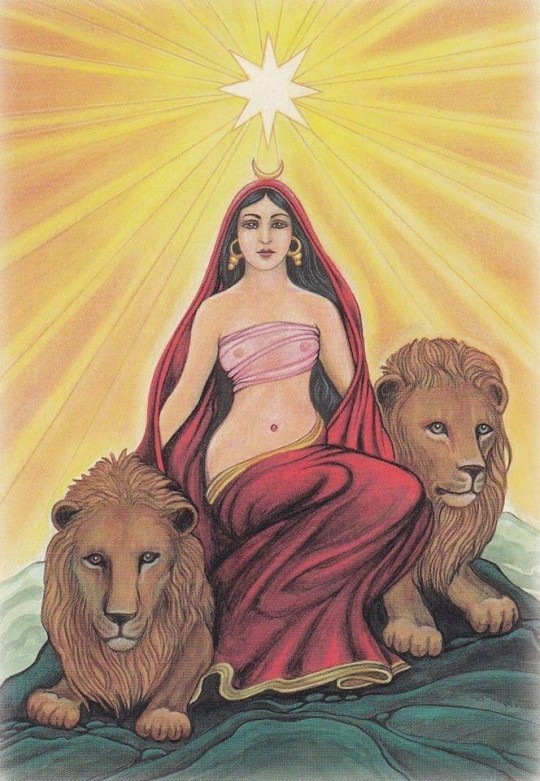
For example: in one story, she became infatuated with the king Gilgamesh, but the latter knowing her fierce reputation, refused her advances. As a result she got furious and unleashed the celestial Bull on Earth which resulted in 7 years of plagues. This celestial bull was later defeated by Gilgamesh and Endiku, and its corpse was throwed in front of Inana. Blinded by rage, she decided that as a punition Enkidu must die and sad at the death of his bestfriend Gilgamesh began his journey to find a cure to Death.
Bharani is a fierce or Ugra nakshatra meaning that its nature is agressive, bold and assertive in pursuing their goals. They are ruthless in the process of accompling what they desire the most and are inclined to extreme mood swings that can result in them to be "blinded" by their extreme emotions perfectly expressing the passionate character of Venus and her other equivalents in differents pantheons of antiquity.
Inana/ Ishtar's story with Dumuzi/Tammur begins as she was convinced to chose him by her brother Utu. Then she got married with the shepphard Dumuzi instead of whom she prefered the farmer: Enkinmdou. During the courtship, Inana prefered the fine textile of the farmer and his beer rather than the thick wool and milk of Dumuzi. The preference for the shepphard illustrates that at the time the Mesopotamian civilisation was known for their proliferent agriculture with the egyptians in the region, so this myth encapsulate the opposition between nomads and sendatary people at this specifific time period.

By the way, another symbol of Bharani is the cave and traditionnaly, the cave was used as a storage room for food. Also Bharani's purpose is Artha so these individuals are motivated to accumalate resources and provide safety and security, so Bharani can be linked to the exploitation of natural ressources like the soil illustrating the preference of Ishtar for the farmer. This is reinforced also by its Earth element.
So coming back to the myth, in a mesopotamian text called Inana's Descent to the Underworld, the goddess goes to Kur (hell) with the intent of conquering it, and her sister Ereshkigal who rules the Underworld, kills her. She learns that she can escape if she finds a sacrifice to replace her, in her search, she encounters servants who were mourning her death however she finds Dumuzi relaxing on a throne being entertained by enslaved girls. Enraged by his disloyalty she selects him as a sacrifice and he is dragged to the Underworld by demons.
He is eventually resurrected by Inana and they become an "immortal couple" as he may only come back to life for half of the year, being replaced by his son (?) who is also his reincarnation for the other half of the same years, so describing the cycle of regeneration of life.
Other mythologycal stories of goddesses in the near east describe a similar patterns:
The goddess Asherah is described as being the mother and the lover of her son Adonis.
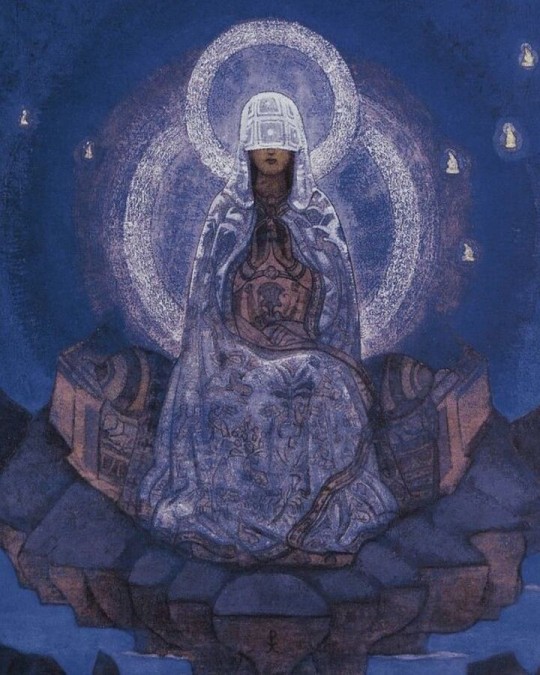
The goddess Cybele in the phrygian pantheon takes the form of an old woman as she described as the mother of everything and of all. And at the same time she is the consort of Attis who his her own son (wtf ?)
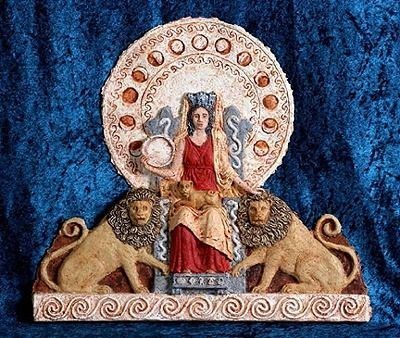
Also, Yama and Yami are implicated in a incestuous entanglement where his sister Yama wanted to lay with him however he refused establishing himself as a god with an infaillible moral campus.
All of these representations illustrate the relation between the masculine and the feminine, life and regenration which are all topics related to Bharani nakshatra. Women by their capacity to give life are seen as the source of life and therefore are eternal as they are able to regenarate themselves through daughters which are identical to them whereas man who is unable to reproduce by himself, is therefore mortal feels the need to associate with her to resurrect through a son who is identical to him. Bharani exiting as the embodiment of the link between "the father and the offspring" which is the feminine vessel.
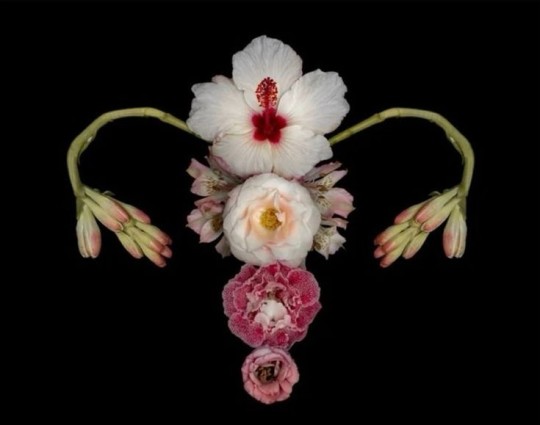

So this is certainly part 1, I think that these ancient myths are where Claire Nakti found her inspiration for her series on Bharani.
#vedic astrology#cinema#coquette#astrology#vintage movies#aesthetic#coquette dollete#fashion#vintage#movies#greek mythology#roman mythology#ancient egypt#bharani#chitra nakshatra#purva bhadrapada#purva phalguni#cowboy carter#venus#adonis
198 notes
·
View notes
Text
𝐒𝐇𝐎𝐑𝐓 𝐁𝐄𝐀𝐔𝐓𝐘 𝐀𝐒𝐓𝐄𝐑𝐎𝐈𝐃𝐒 𝐎𝐁𝐒𝐄𝐑𝐕𝐀𝐓𝐈𝐎𝐍𝐒:🦢



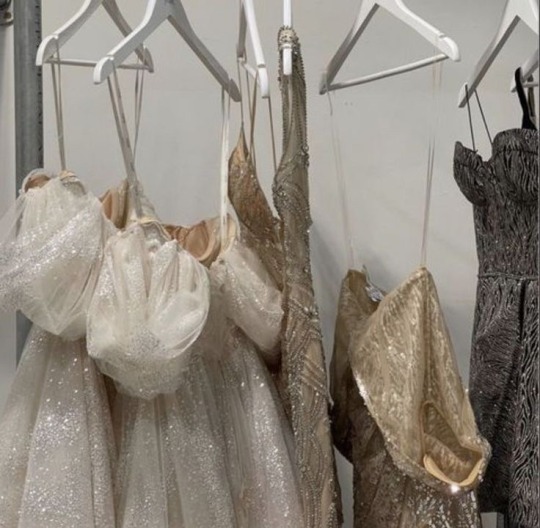
𝐍𝐨𝐭𝐞: 𝐚𝐬𝐭𝐞𝐫𝐨𝐢𝐝𝐬 𝐚𝐫𝐞𝐧’𝐭 𝐦𝐲 𝐬𝐭𝐫𝐨𝐧𝐠 𝐬𝐮𝐢𝐭 𝐚𝐬 𝐲𝐨𝐮 𝐜𝐚𝐧 𝐬𝐞𝐞, 𝐛𝐮𝐭 𝐢 𝐰𝐚𝐧𝐭𝐞𝐝 𝐭𝐨 𝐩𝐨𝐬𝐭 𝐬𝐨𝐦𝐞𝐭𝐡𝐢𝐧𝐠 𝐭𝐨𝐝𝐚𝐲 𝐭𝐨 𝐭𝐡𝐚𝐧𝐤 𝐲𝐨𝐮 𝐟𝐨𝐫 𝐲𝐨𝐮𝐫 𝐢𝐦𝐦𝐞𝐧𝐬𝐞 𝐥𝐨𝐯𝐞🤍.
𝐀𝐬𝐭𝐞𝐫𝐨𝐢𝐝 𝐈𝐬𝐡𝐭𝐚𝐫 (𝟕𝟎𝟖𝟖) is equivalent to Aphrodite, Ishtar was the Sumerian deity of beauty, fertility and sexuality, having it 𝐜𝐨𝐧𝐣𝐮𝐧𝐜𝐭 𝐩𝐞𝐫𝐬𝐨𝐧𝐚𝐥 𝐩𝐥𝐚𝐧𝐞𝐭𝐬, (𝐬𝐮𝐧,𝐦𝐨𝐨𝐧,𝐦𝐞𝐫𝐜𝐮𝐫𝐲, 𝐯𝐞𝐧𝐮𝐬), 𝐌𝐂 𝐨𝐫 𝐀𝐂 𝐚𝐱𝐢𝐬 𝐛𝐲 𝐚 𝐜𝐥𝐨𝐬𝐞 𝐨𝐫𝐛 (𝟎,-𝟏,-𝟐) is a beauty indicator.
𝟓, 𝟏𝟕, 𝟐𝟗 𝐝𝐞𝐠𝐫𝐞𝐞𝐬 𝐢𝐧 𝐈𝐬𝐡𝐭𝐚𝐫 may mean being famous for your beauty, or having a beautiful hair!, Selena gomez has ishtar 5° degree and her hair is very beautiful!, Queen riri too in 5° degree 10th house.
𝐈𝐧𝐧𝐚𝐧𝐞𝐧 (𝟑𝟒𝟗𝟕) is also is a beauty indicator asteroid, She’s a Sumerian goddess who’s the queen of heaven + earth, having it obviously in earth and air signs is a very good placement, 𝐩𝐫𝐞𝐟𝐞𝐫𝐚𝐛𝐥𝐲 𝐋𝐢𝐛𝐫𝐚 𝐨𝐫 𝐓𝐚𝐮𝐫𝐮𝐬.

𝐈𝐧𝐧𝐚𝐧𝐞𝐧 𝐢𝐧 𝐓𝐚𝐮𝐫𝐮𝐬 𝐨𝐫 𝐓𝐚𝐮𝐫𝐮𝐬 𝐝𝐞𝐠𝐫𝐞𝐞𝐬 (𝟐,𝟏𝟒,𝟐𝟔) might mean being a very sensual lover, or just have this air of richness, dearzia has this asteroid in 𝐓𝐚𝐮𝐫𝐮𝐬, and you can feel elegancy oozing out of her in waves. 𝐂𝐚𝐩𝐫𝐢𝐜𝐨𝐫𝐧 𝐈𝐧𝐧𝐚𝐧𝐞𝐧 indicates being a strong minded female, my mother has this placement and she’s a girl boss.
𝟕𝟔 𝐅𝐫𝐞𝐢𝐚 is the goddess of love and queen of valkyries, magic and wealth, from my point of view i think it means where we are very blessed in beauty, or what’s the most beautiful thing about us.
For example i have it in the 𝐬𝐞𝐜𝐨𝐧𝐝 𝐡𝐨𝐮𝐬𝐞, and I’ve been told multiple times that my voice is fancy?, yeah idk what this is but they say that i sound like im rich or smtg, but because it conjuncts chiron i don’t believe them, although it’s really prominent since it trines my sun and opposites my moon.
𝐊𝐥𝐞𝐨𝐩𝐚𝐭𝐫𝐚 (𝟐𝟏𝟔) 𝐢𝐧 𝐥𝐞𝐨 𝐨𝐫 𝐥𝐞𝐨 𝐝𝐞𝐠𝐫𝐞𝐞𝐬, 𝟏𝟎𝐭𝐡 𝐡𝐨𝐮𝐬𝐞, 𝐬𝐮𝐧 𝐚𝐬𝐩𝐞𝐜𝐭𝐬 is such an amazing placement to have. The power and queen vibes these people carry is mesmerizing, like please turn me to a potato under your feet i won’t mind.
𝐈 𝐭𝐫𝐢𝐞𝐝 𝐦𝐲 𝐛𝐞𝐬𝐭 𝐥𝐦𝐚𝐨😭, 𝐡𝐚𝐯𝐢𝐧𝐠 𝐭𝐡𝐞𝐬𝐞 𝐢𝐧 𝐩𝐫𝐨𝐦𝐢𝐧𝐞𝐧𝐭 𝐩𝐥𝐚𝐜𝐞𝐦𝐞𝐧𝐭 𝐢𝐬 𝐚 𝐛𝐞𝐚𝐮𝐭𝐲 𝐢𝐧𝐝𝐢𝐜𝐚𝐭𝐨𝐫, 𝐛𝐮𝐭 𝐞𝐯𝐞𝐧 𝐢𝐟 𝐲𝐨𝐮 𝐝𝐨𝐧’𝐭 𝐡𝐚𝐯𝐞 𝐚𝐧𝐲 𝐢 𝐰𝐚𝐧𝐧𝐚 𝐭𝐞𝐥𝐥 𝐲𝐨𝐮 𝐭𝐡𝐚𝐭 𝐲𝐨𝐮𝐫 𝐬𝐨 𝐟𝐮𝐜𝐤𝐢𝐧𝐠 𝐦𝐞𝐬𝐦𝐞𝐫𝐢𝐳𝐢𝐧𝐠




#astrology observations#astrology aspects#astrology planets#astrology notes#astrology degrees#astrology houses#astro placements#astro observations#astrology#astro notes#astrotips#astro chart#beauty asteroids
848 notes
·
View notes
Text
So @follow-the-compass-home made an interesting point about how all the other victors are specific celestial bodies and Scott is just... stars. And that's not fair so here's an idea:
Scott is Venus
Now, he still gets to keep the star imagery because Venus is often known as the Evening/Morning star. It is the third brightest thing in Earth's sky (the other being the Sun and the Moon).
Venus is of course often associated with the goddess Venus, the Roman equivalent of Aphrodite which also fits quite nicely with Scott's character.
Aphrodite is primarily the goddess of love, which can easily translate to Scott's strong loyalty and devotion to his allies. I mean, he literally rejected the boogeyman curse because it would make him harm his allies. He was also probably one of the only people who could pull off the 'love you' task without being suspicious. As he said himself, it was very on brand for him and barely anyone questioned it. This connection can also apply to how Scott plays the social games if not pushed, gathering allies and IOUs left and right. And the theme of love stays relevant as Scott's very first ally in the series was his 'husband'. Also there being a carnivorous flower named after the planet Venus is a cute little nod to the proverbial flower husband.
Aphrodite is also the goddess of beauty and he is the pretty Scott after all. Scott's love for making pretty and aesthetic bases while in a literal death game is another good example of this connection.
One of the biggest aspects of Aphrodite is her rejecting the husband Zeus assigned her, kinda like how Scott rejected Pearl in Double Life.
Limited life also has a lot of symbolism that could touch on the Venus ties. Aphrodite was said to be born out of the sea and Scott was a Mean Gill that season. Also one of Aphrodite's most famous lovers was Ares. Ares' was known by the Romans as.... Mars.
Aphrodite most likely originates from Ishtar/Inanna, an ancient Mespotamian goddess. One of her symbols is an eight pointed star. She is not only the goddess of love, but also of warfare, which fits into Scott being pretty good at PVP. Sometimes she is referred to with the epithet Irnina, which means victory and Scott is one of the Winners.
In Islamic tradition, Venus is associated with a beautiful woman who managed to get into heaven by tricking a pair of angels, but she became trapped there. Kinda like how Scott became the first victor other than Grian, the watcher.
In Turkik mythology, the god Erkliğ Han is associated with Venus. He is responsible for shooting stars which are called fiery arrows. Scott is very good with a bow, after all.
Tldr; make my boy an actual celestial body he desrves it
#i am not fully familiar with all the mythologies so i am very open to corrections!#ok enough about silly gay blockmen back to legend of korra#trafficblr#traffic smp#traffic series#life series#life smp#3rd life#last life#double life smp#limited life#secret life#scott smajor#smajor1995#smajor95#smajor mcyt#dangthatsalongname#scott major#pearlescentmoon#martyn inthelittlewood#martyn littlewood#inthelittlewood#grian#traffic life
126 notes
·
View notes
Note
Child of Venus (or alternatively a legacy) Tim Drake.
First really quickly going to run down some very basic history quickly.
Roman Venus comes from the Greek Aphrodite, who comes from the Western Semitic goddess Astarte, who is known by the ancient Mesopotamian as Ishtar and earlier Ianna.
This is an extreme overview of thousands of years of history, but it conveys my point. I want to explore all of these aspects quickly before I get into my thoughts on how this connects. (Also, like an extreme basic rundown of things that people might not know)
Ianna - is the goddess of love and war (along with several other fields) but is also heavily associated with divine law and political power. An interesting fact is that she was actually a three-form goddess. She went from a fairly localised deity to one of the most venerated deities across Mesopomeia. When the Assyrians took over, she became the highest deity, even above their national ones. She was so popular and essential that she is alluded to in Hebrew text. She didn’t experience a proper decline until the period between the 1st century CE and the sixth century CE when Christianity became widespread. She was in more myths than any other Sumerian deity. https://en.wikipedia.org/wiki/Inanna
Astarte - is the goddess of these associated combinations: war, royal power, healing, and hunting (and several others). The travels, trade, and colonisation of the people would end with her being worshipped and an accepted deity in many places, from Egypt to the Iberian peninsula. She is considered to be the equivalent of Isis in some schools of thought. Her worship would land in Cyprus, where she could have merged with a local goddess and would slowly go to mainland Greece during the late Mycenean era or the following post-Broze age collapse. In the Greek classical period, she was occasionally equated with Aphrodite through (what a great many Polythetsic cultures did) the practice of synchronising deities. https://en.wikipedia.org/wiki/Astarte
Aphrodite - is the goddess of love, beauty, and passion (along with the others everyone knows). She is one of the twelve Olympians and is one of the most widely celebrated and worshipped deities in the Hellenic world. Some of her other epithets were Eleemon (the merciful) and Enoplios (armed). She was called Tymborychos (gravedigger) along with the previously discussed Areia (the warlike) in one of her darker, more violent natures. https://en.wikipedia.org/wiki/Aphrodite# https://en.wikipedia.org/wiki/Aphrodite_Areia
Venus - is the goddess of desire, prosperity, and victory. She is the ancestor of the Roman people through her son, and Julius Ceaser claimed to have been her ancestor. A couple of the epithets I want to highlight for a moment are Fleix (lucky), Genetrix (the mother), Physica Pompeiana (Pompeii’s protective goddess), Verticordia (charger of hearts), and Victrix (victorious) https://en.wikipedia.org/wiki/Venus_(mythology)
Okay, now let's move on to my thoughts because this consumed my brain so much that I needed to grab my computer and write it down.
The Thoughts!
I’ll start with the child of Venus and then do the legacy version.
Janet and Venus. Imagine if, on one of the important archaeology trips, Janet comes across something important to Venus. It could be anything, whether it be the start of new ruins of a worship spot or a statue. Venus appreciates Janet's respect towards the findings and wants to know more about Janet. (There is also the fact that there is an extreme difference between the number of men and women in archaeology, especially field archaeology.) The two of them share a conversation where Janet shows interest in the history of Venus, and Venus herself drops the idea that the history behind Venus and the goddesses that precede her is also enjoyable. It was a test. Janet takes this information, wanting to have another conversation with the woman and learns as much as possible. Realising that she can do more field research, she sets it up. Venus appreciates this, and he wonders whether Tim is just the kid of Janet and Venus or if he has a three-parent setup. Tim exists.
Did Venus more or less give Janet a quest? Yes. Does Janet regret it? No. It is a very cute and tragic set-up because to be favoured by the gods is to be doomed by them. You could change up their death a bit, too. To match the tragedy vibe.
Tim grows up learning all about his parent's work. It may not have been his favourite, but he listened and learned. Tim, sent to boarding schools and in the comics, always saw school as a necessity but something secondary—Tim, who was often separate from his parents. What if when Dick Grayson’s parents died (Monster attack?), his parents realised just how dangerous the world is, and they sent him to different boarding schools to try and keep him safe. It could also explain some of Jack’s attitude. Knowing that Tim isn’t truely his. Knowing the reality that fate could hand his son. Explain why he often sits back to parenting, knowing that his son could die in tragedy young, but also why he clings sometimes. Why will he hammer down on parenting when he realises that he can’t protect his kid and his kid could die?
Now onto Tim. Tim loves his city so much. Tim goes back to Gotham even when his whole family moves. Tim would do anything for Gotham. That is Passion and Love. That is dedication. Tim, who becomes Robin. Who must go through a much longer trail and training before becoming Robin properly? He who trained under Shiva, who Shiva sees potential for. He who chooses an unconventional weapon. One that does not quickly kill but requires skill and ability to use. (He is fighting a war in Gotham but also loves Gotham. He hurts and helps. He causes pain, and he saves. He brings himself to ruin to help his loved ones in his beloved city and make something better for the world he lives in.)
Tim finds himself victorious most of the time but sometimes has to rely a bit on luck. He is Robin, a protector of Gotham. Tim, by the way of being Robin, is trying to create a better Gotham. Tim is the one who created the Batfamily as we know it. He often gets people to work together that do not work together very well.
He is also well-travelled because he is Robin and a hero in general. He has been on multiple teams and has worked alone, and despite seeing what the world (the universe) has to offer, he is still from Gotham and will belong to Gotham.
But tragedy follows him, and he ends up in front of the graves of his loved ones more often than not. His parents, his friends, and those he feels he has failed. Even with the best of intentions, people still die and leave, and generally, being Robin creates a tragedy.
Tim being the first Roman in the family could be very alienating and make him feel like he has to prove himself, but also the idea that he would have to work harder to prove he can fight and be here, and people still underestimate him? Venus may have been significant, but people have inherent biases. No one would assume a child of Venus would be a skilled warrior despite the history of war. However, the opposite is how people would think he only got this far because of how important of a goddess his mother is. That he didn’t have to put in the hard work because he wasn’t expected to.
I have many more thoughts, but they generally vibe without a coherent statement. If I find words for them, I’ll send another annon.
~~~
The Legacy idea
One of the Drakes is a child of Venus who is doing archaeology because it is part of the quest their mother sent them on. They are constantly travelling because staying in one place could have put their son in even more danger. If you still wanted Tim to be tied to Athena, you could have the other parent be a child or a legacy of Athena.
Annon AK
(btw if you guys are interested in aphrodite lore, i really enjoyed Overly Sarcastic Production’s video on her! theyve also done one on Dionysus, Hermes and Hades/Persephone - plus a ton of other myths and classics :))
Honestly i am so in love with aphrodite/venus child tim (no pun intended). while yes athena fits him in terms of intellect and wit- tim is more so defined by his love- for his friends, family, gotham itself. (and thank you @pooky-chan for telling me abt aphrodite tim, i feel like his love is such an underused part of his character.)
i think actually going into janet and jack's relationship with venus is super interesting! i hadn't really thought about how their birth/godly parent would effect any of their family dynamic at all.
tbh everything youve said is really great! i definitely couldn't have gone in that much detail for his background. thank you for sharing :D
30 notes
·
View notes
Note
you should check this journal article out:
Graf, F. “Women, War, and Warlike Divinities.” Zeitschrift Für Papyrologie Und Epigraphik, vol. 55, 1984, pp. 245–54. JSTOR, http://www.jstor.org/stable/20184039. Accessed 26 June 2024.
Thanks for the recommendation! It was an enjoyable and interesting read!
I'm not sure if you were using this article to argue a certain perspective or interpretation of myth or if you thought it was relevant to my post about pop mythology but I'm gonna use this to elaborate on a few points I've been making about the gods. My disclaimer is that I am not a historian or a history major or a classicist; I have fairly limited formal education in the Classics and I am, at best, an amateur. This is my opinion but if someone has additional context or if I'm wrong about something, please let me know.
Aphrodite Areia:
*will probs address Ares and his associations with women in a separate post*
Although that one post I made was lacking in nuance (bc I was ranting), I have gone into further detail in other places; I acknowledge that Aphrodite as a goddess has associations with war, among other things like politics, sailors, marriage, and city defence. I'm not denying that the αρεια epithet exists or that there were not statues of armed Aphrodite. She was absolutely Αφροδιτη 'ωπλισμενη and νικηφορος and εγχειος.
I'm also aware that she was likely an import or at least syncretized with near Eastern goddesses like the Phoenician Aštarte or Babylonian Ishtar, something Graf himself mentions in his article. Interestingly, Aphrodite is not unique in her near Eastern influences though. Graf also writes that "... the old statue of Apollo at Amyclae with its spear derives from the iconography of the Oriental Warrior" (Graf, 1985, p. 251). Does this make Apollo, as he existed to and was worshipped by the Greeks, a war god? I would argue that it makes him warlike, just as Aphrodite can be warLIKE, but they aren't principally gods of war. Or, for example, Zeus was attributed the male equivalent title αρειος, but he's not considered a war god. Just because a god has a certain epithet or is depicted with certain attributes does not mean that they were worshipped as the presiding authority over that particular thing or experience.
Moreover, αρεια as a reference to the statue of armed Aphrodite that existed in Sparta is further robbed of its uniqueness, and thus its ability to set Aphrodite up as a proper goddess of war by the extreme militarization of Spartan society. Plutarch, for example, writes about the Spartans that "They worship Aphrodite in her full armour, and the statues of all the gods, both female and male, they make with spear in hand to indicate that all the gods have the valour which war demands". So all gods have warlike attributes in Sparta which tracks for a society steeped in a warrior culture. Aphrodite, then, is not a distinct war goddess in Sparta, rather that all gods are more warlike including her.
In Corinth, she was the tutelary deity of the city, its divine guardian and patron. This brings with it some association with war and politics. Graf even mentions that she was depicted as armed in at least one instance in Corinth, where once again Middle Eastern influences are evident (Graf, p. 251). Moreover, as all tutelary deities, the people under her protection prayed to her for the defence of the city. However, once again, her military qualities in this regard aren't unique to her. Tutelary deities of other cities (popularly Apollo and Athena but we also see Zeus, Hera, Poseidon, and others) would also haven been honoured for the protection of the city and its people as well as success in battle.
My ultimate point is not to deny Aphrodite's warlike attributes. There absolutely are instances, statues, or places where she is referred to as armed and warlike (such as in Sparta, Cyprus, Corinth, etc.) but she isn't principally a goddess of war. She is principally the goddess of love, beauty, sex, fertility, etc. These are attributes that are universal to her in place and time. However, a lot of people want to make her a goddess of war first and a goddess of all these other things second. This takes away from the fact that there are existing goddesses who are principally associated with war, such as Athena.
I've also usually heard people using this to somehow make Aphrodite seem "cooler" or more "interesting" which betrays a (probably unconscious) dimension of sexism to the entire argument as it is presented in pop myth takes. If you cannot respect a goddess/woman/character that is presented with traditionally feminine qualities-- and love and beauty absolutely are seen as feminine in our society-- then you value traditional masculinity more than traditional femininity. If the only way you can make someone cooler/more interesting is by giving them traditionally male qualities, such as martial prowess, chances are you see things associated with femininity as inferior.
And this is primarily why the whole Aphrodite Areia thing irritates me so much. People want to hold her up as a goddess of war while ignoring all the other things that she was far more commonly worshipped for by ancient peoples (which is what pop myth does). Sure, she can be warlike in certain circumstances, but she's still predominantly a goddess of sexual union.
At the end of the day, though, stories exist to be told and retold. Change is natural and expected in that process. Still doesn't mean everyone has to agree on everything.
#warlike ≠ war goddess it's that simple#Graf does say that she was probs worshipped as a war goddess in sparta for centuries but the spartans didnt leave us much#so whats passed down to us from the greek sources is that she was primarily a goddess of love and beauty#and theres nothing wrong with that thats cool too imo#and nowhere in MYTHOLOGY specifically (not religion) is she presented as a martial deity#so a case can be made that her warlike qualities are tangential#mmm didnt mean for another essay in the tags will probs make this a proper post at some point#but the sexism i cannot deal with genuinely wanna slap those ppl with a copy of the theogony bc fuck them and fuck hesiod#aphrodite#greek mythology#aphrodite areia
15 notes
·
View notes
Note
If the LIs were deities what would be there domains, favored animal, & weapon? Suchebh & Twilit, sweetcheeks (sweetcheeki?) you’ve been evicted, gotta get new ones, sorry :(
oh, this an interesting thing to consider... i wasn't quite sure whether you meant deities within the world of the game, or more something related to real-world deities, so i might try and give an example of both? i will admit that weapons is a bit hard, though, i'm not sure all of them would use specific weapons haha (adding a cut here for Length)
Arianis
Arianis would be extremely Put Out to suddenly be made a deity, but not particularly Surprised... within the game's universe i think the most likely thing they would be made a deity of would be quite unflattering, something like... Parasites. or Decay. there isn't a terrific real-world equivalent but i assume they would be perceived in a way similar to Pestilence from the Four Horsemen of the Apocalypse, more or less. somewhere between Pestilence and Nergal, anyway - not as Purposefully Destructive as Nergal, that is to say XD
the animal used to symbolise them would probably be a wasp. if pressed to assign them some kind of weapon it'd probably be something like a gnarled and twisted staff of rotting wood.
Heluur
what he would be worshipped for in the game's world kind of depends on the context of... whether or not there's any growth in understanding of the demons and who/what they are. the most positive light i think he could be painted in would give him something like New Beginnings, while negative portrayals would view him more as Corruption. in both versions he'd be strongly associated with time, and viewed as a catalyst of great change. Kronos is probably the closest real-world equivalent, or somewhere in an admixture of Kronos and Aion.
Heluur's animal symbolism will always be a serpent; he generally is not a weapon guy, but i could see something like the Asclepian rod or caduceus being associated with him.
Lithiana
there's probably not a lot of ambiguity in what people would worship Lithiana for - Lust and Sexuality, probably with Sex Work thrown in. unfavourable portrayals of her might add Temptation or Control or something as well. there are a lot of real-world deities that are sort of similar but also a weird amount of them include things like war (Ishtar and Freya for example) so i guess the closest equivalents would be like. Aphrodite or the Mesopotamian Nanaya.
like Heluur, Lithiana's animal symbolism is fairly set - it will always be a shark. the particular type of shark i have in mind when i think about her colouring is a mottled grey kind of wobbegong. and i think for various symbolism-related reasons i'd have to give her a whip or a flail as a weapon.
Malkorath
like Heluur, Malkorath's domains would depend heavily on perception of them and demons in general; in the best light, they'd probably be regarded as representing Individuality and Freedom, and in the worst, something probably more like Death and Calamity. both versions would have overtones of boldness, victory and the hunt. as far as real world equivalents go, probably the most applicable is The Morrígan, though that aligns more closely with the negative aspects than the positive... you could maybe weave in someone like Artemis in that regard.
animal symbolism for Malkorath is kind of tough since they're made up of a bunch of different types already... a falcon, maybe, or a panther. some kind of swift predator. i do think there's not much chance of anyone associating a weapon with Malkorath other than their own natural weapons though lmfao
Suchebh
Suchebh would be fairly universally considered as a deity of Hedonism, Revelry and Excess - negative depictions might add a few things like Madness and maybe Pain, but i think they'd fare more or less the same otherwise. as such, the real-world equivalent is probably quite obviously Dionysus, with a pinch of Pan thrown in for good measure. maybe if you could combine those two with Zeus/Hera at the same time you'd get the best approximation.
as for what kind of animal symbolism people would use for Suchebh, that's a bit rough... peacocks are kind of obvious. birds of paradise, maybe? something flashy like that. for a weapon, they would want something like Zeus's lightning bolts. for the Drama of it all XD
Twilit
most probably Twilit would be worshipped as a deity of Transformation and Metamorphosis. certain people might associate them with Chaos, but they'd personally be offended by the notion that they bring it anywhere themself, so i guess that'd be an argument for priests to have lmfao. it's much tougher to find a real-world equivalent for them... there's Proteus, an ancient Greek god who constantly changed forms and apparently refused to answer questions honestly, but there's also primordial beings of chaos like Abzu and Tiamat, whose forms were too nebulous to be described and represent anarchy and upheaval, which are probably about the best available.
Twilit will always stay as a moth as far as symbolism is concerned. they also almost certainly wouldn't use any weapons, but i can imagine art depicting them holding bones in the way that someone else might hold a weapon.
thank you for your ask! i sure hope this manages to answer your question XD
#what does the chaos mirror see#anon#physically restraining myself from making the nerdiest most obscure injoke in history about the appropriate plural of sweetcheeks#it's fine. i'm Normal and Fine i don't need to make bad jokes it's Fine#sometimes people just didn't worship deities like my guys irl sadly lmfao#there are a couple of fictional ones i could have thrown in like orome for malkorath. graz'zt for suchebh#pale night and shub-niggurath for twilit#but i left them out since they're fictional and i'm not sure they would count for that reason really#considered putting in tabiti for lithiana but nobody but me would know her<3#catch me also deliberately not putting Satan on heluur's list XD#long post.#all of my posts are long...
33 notes
·
View notes
Text
Master List of Posts
this is a work in progress, check back for more other times.
last updated Monday, August 28, 2023.
I really appreciate comments with your placement of the asteroid.
First and foremost, about energy/effective energy manipulation.
The Four Esoteric Paths
About Master Posts in General where as the Post itself is the man.
Lilith - The Lilith Asteroids; Ceres as a Wounded Piece of Lilith;
Adonis - Being Brought to Persephone;
Asmodeus - As a Genie; Defined and Relationship with Sarah; Running Away with Lucifer; Tobit 3:16;
ASTEROID THEORIES
Conversion - Conversion or Translation to One's Own;
POSTS ABOUT MISCELLANEOUS GODDESSES
Aphrodite - Caring for son Eros; Parentage;
Athena/Athene - Rape of Cassandra; Rape of Medusa; Sufferer of Depression;
Cassandra - Seeking Sanctuary with Athena;
Gaia - As Wife of Uranus;
Glauke - Strength Compared to Hades;
Freyja - As a Dark Sorceress and Goddess of Love;
Hecate - Venus and Moon Dominant; Linked to Fates; About Disrespect; Nyx as a Competent Mother; Conjunction Functions; On Hecate as a Male; About Sacred Sexuality; A Wounded Hecate; Feast Day of August 13th;
Iris - Wife of Beelzebub;
Ishtar - Protectress of Prostitutes;
Juno - Finding Enchantment in Mild Tangibles;
Medusa - Being Assaulted by Perseus; Children with Neptune;
Pandora - Meaning Gifts;
Psyche - On being turned into a Goddess; Goddess of the Soul;
POSTS ABOUT CERTAIN SUBJECTS
Nurturing - Grief Eating;
Prostitution - Industry; Working Girls; Death and Destruction promised by God; Ishtar's Vengeance Against GOD.
Prioritizing - About Something Urgent; One True Love;
Tools/Objects - Finding Better Search Results; Winchester as a Brand of Bullets;
POSTS ABOUT MUSIC AND THE MUSIC INDUSTRY
Being in Love - With a Stripper;
POSTS ABOUT DISORDER
Personality Disorders - Narcissistic Personality Disorder; Psyche as an Empath; Narcissistic Gas; Masterman;
Complex Post Trauma Disorders - About Being Deprived;
POSTS ABOUT EGYPT
Anubis - As really sexy; As a Masculine Version of Nephthys;
Apophis - Wife Taweret as Daughter of Amun and Mutt; As Epitome of Egypt; On Cruelty; A Warning to Never Praise This Guy; Natural Disasters; After Being Slayed;
Cleopatra - Symbolizing Joy and Dancing; Isis as Inspiration;
Amun-Ra - Different from Osiris;
Queen Hatsheput - As the World's Most Noble Lady;
Horus - Greek Equivalent is Apollo;
Nephthys - Gold as Illumination to Get Out of Depression; Osiris' Downfall; A warning to not Mistake her for Isis; Serket as Nephthys' Daughter; A daughter of Nut; At her worst;
Nut - Children of Nut; Daughters as Protectresses; Isis' Shadow Side Compared to Seth Terrorizing Horus;
Osiris - Husband of Isis, Father of Osiris; Name Meaning;
Sekhem - Alchemy;
POSTS CATEGORIZED BY RELIGIOUS ATTRIBUTION
Hinduism - Kali as a Nurturing Mother and Force of Destruction;
17 notes
·
View notes
Note
The whole "Aphrodite was Ishtar" thing is so weird. On one hand, I get it. Syncretism and all that. On the other hand, do we even have any first hand accounts of ancient civilizations believing that a god from their culture was literally the same god from another? Because from what I could find, Indo-European religions do share certain archetypes thanks to them branching off from a single religion, and there were equivalents, but that seemed to be more so for the sake of creating analogues (ex: Herodotus equating the Scythian Queen of the Gods Tabiti to the Hearth Goddess Hestia), convenience, or in worst case scenarios, survival. Sure, we have the Romans to look to, but as I understand it, even Mars was looked at differently than how most of the Greek city-states saw Ares.
Please correct me if I'm wrong on this, though! I am not a historian in any sense of the word!
From what I know, we don't have ancient texts saying something like "They have Ishtar but they call her Aphrodite". The people themselves didn't see them as the same goddess! And we still don't.
That's why the whole thing pisses me off as well because often in western academia the accounts of ancient peoples - and the modern ones in these areas - are respected only when the modern people feel like it.
35 notes
·
View notes
Text
Mythology Inspired Names: Egyptian (fem)
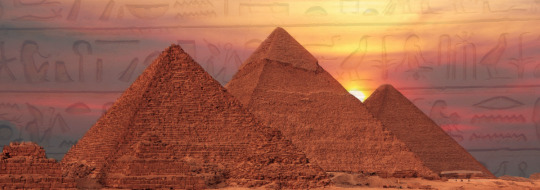
Amunet ~ Egyptian, meaning "the hidden one."
Amunet is an Ancient Egyptian primodial goddess thought to have existed before the beginning of creation.
pronunciation: ahh-muh-net
Anat ~ Egyptian, also spelled "Anant," "Anit," "Anthat."
Associated with war and hunting, she is also a goddess of fertility and sexual love. Pharaoh Ramesses II adopted Anat as his personal guardian in battle.
pronunciation: ahh-naht
Astarte ~ Egyptian, also spelled "Attar," "Attart."
Largely a love goddess with some war associations, Ashtart was adopted into Egyptian faith but was originally a Seminitic goddess. Her Greek equivalent is Aphrodite.
pronunciation: uhh-star-tee
Besna ~ Egyptian, very similar to "Beset."
A goddess of home security. Of safety of the home and within the home. Potentially another name for "Beset," the female version of the god Bes.
pronunciation: bes-nah
Hathor ~ Egyptian, meaning "House of Horus."
A major goddess in the Ancient Egyptian faith, Hathor was associated with many things, including the sky, joy, motherhood, queenship, and dance. Literally the Ancient Egyptian concept of femininity.
pronunciation: ha-thor, ha-tor
Hemsut ~ Egyptian, also spelled "Hemuset."
Sometimes a single goddess, sometimes a group of goddesses, all defined as the personification of fate.
pronunciation: hem-suut
Heret-Kau ~ Egyptian, meaning "she who is above the spirits."
Very little is known of this goddess, but she is known as an attendant to Isis, as well as the guardian of spirits in the afterlife.
pronunciation: hair-et-kaou
Ishtar ~ Egyptian, also seen as "Inanna."
A Mesopotamian goddess as well as Egyptian and Assyrian, she is very similar to Astarte but is also affiliated with political power and divine law.
pronunciation: ish-tar, iss-tar
Isis ~ Egyptian, meaning "lady of the throne."
An incredibly important goddess in Egyptian mythology, Isis is the wife of Osiris and mother of Horus, and the Ancient Egyptian goddess of magic.
pronunciation: I-sis
Kebehut ~ Egyptian, meaning "cooling water," also spelled "Khebhut."
The daughter of Anubis, she helps souls who have died by giving them water as they wait for the mummification process.
pronunciation: keb-eh-hut
Ken ~ Egyptian, also seen as "Kiun."
Not much is known of the goddess Ken, other than that she is a goddess of love. This name is not as overtly Egyptian as most on this list.
pronunciation: ken
Ma'at ~ Egyptian, meaning "she who is righteous"
The Ancient Egyptian goddess of order, justice, balance, truth, and harmony. Incredibly important and revered in Ancient Egypt.
pronunciation: mah-aht, mai-yaht, may-et, muh-at
Mafdet ~ Egyptian, meaning "to leap, to jump"
The goddess of legal justice known for hunting down and killing dangerous creatures who threaten Ma'at, or balance. Often seen with the head of a cheetah.
proununciation: Mahf-det
Mehit ~ Egyptian, meaning "north wind," and "guardian"
An originally Nubian goddess associated with the north wind and the protection of holy places. Also a war goddess.
pronunciation: me-het
Meret ~ Egyptian, meaning "she who is beloved"
The Ancient Egyptian goddess of music, singing, dancing, and rejoicing. She maintains cosmic order through music.
pronunciation: mehr-eht, mehr-iht
Neith ~ Egyptian, also spelled as "neit," "nit," "net."
A goddess of war, weaving, wisdom, and the cosmos, some stories show Neith as the original creator, who created the universe and all it contains, as well as governs it.
pronunciation: nee-ith
Nephthys ~ Egyptian, also seen as "Nebet-Hut."
The goddess of water, mourning, night, darkness, protection, magic, health, and beer, Nephthys is often seen with her sister Isis.
pronunciation: Neph-th-ihs, neph-th-ees, neph-t-hees
Pakhet ~ Egyptian, meaning "she who tears open."
One of many Egyptian goddesses of war, Pakhet is most likely a regional goddess. She is also known as the protector of motherhood.
pronunciation: pah-kh-eht, peh-kh-eht
Perit ~ Egyptian
Perit is a minor Egyptian goddess. One of the many goddesses of the underworld, she is known for her words, which breathe life and strength into Osiris.
pronunciation: pehr-iht
Re ~ Egyptian, meaning "sun," and the female version of "Ra."
The Ancient Egyptian god of the sun, Ra is also the father of many other deities. Specifically associated with the midday sun, when light is at its highest, Ra is one of the most important Egyptian deities.
pronunciation: rei, ree
Ren ~ Egyptian, meaning "name."
The Ancient Egyptians believed there were many parts that made up the soul, one of which was the "ren," or the true name. The true name was essential to a soul maintaining its identity after death.
pronunciation: rehn
Renenet ~ Egyptian, meaning "she who nurses," "she who fosters."
Renenet is the goddess of nourishment and the harvest. She also protects the pharaoh as they journey into the afterlife.
pronunciation: rehn-ehn-eht
Satet ~ Egyptian, meaning "she who pours," also spelled as "satit," "satis," "sati," " setis."
Satet was known for protecting the southern border of Egypt as well as being the personification of the annual Nile flooding. Satet also sought to grant the wishes of those looking for love.
pronunciation: sah-tiit, sah-teht
Sekhmet ~ Egyptian, meaning "she who is powerful."
Sekhmet is the goddess of war, fire, healing, medicine, and plague. Often seen with the head of a lioness, Sekhmet is closely associated with Ra.
pronunciation: sehk-meht, sehk-muht
Serket ~ Egyptian, meaning "scorpion."
The scorpion goddess of healing, magic, and animals. She is known for helping to heal the venomous bites and stings of animals.
pronunciation: ser-k-eht
Seshat ~ Egyptian, meaning "female scribe."
Seshat is largely the female personification of knowledge in Ancient Egypt. She is associated with science, writing, math, architecture, astronomy, wisdom, and building.
pronunciation: seh-sh-aht
Shai ~ Egyptian, meaning "fate."
The deification and personification of fate in Ancient Egyptian mythology. Shay has been depicted as both male and female.
pronunciation: shah-ee, shy, sh-ai
Tawaret ~ Egyptian, meaning "she who is great."
The goddess of fertility, women, childbirth, and the home. Her symbol was often worn by pregnant women, hoping for Tawaret's help as they brought children into the world.
pronunciation: tah-war-eht, tau-reht
Tayt ~ Egyptian, meaning "garment."
The Ancient Egyptian goddess of weaving and fabric and textiles. She is also lightly associated with mummification, as she would help to wrap bodies in linens.
pronunciation: tah-heet, tah-eet
Tenenet ~ Egyptian, also spelled "Tjenenet."
She is the goddess of protection, childbirth, and beer. Tenenet specifically protected the uterus during pregnancy.
pronunciation: twen-ehn-neht, ten-ehn-neht

These name lists are intended to help writers and artists. There is no expectation of credit, and these lists aren't meant to be the end-all be-all lists of possible names. There are millions out there, and this is just for fun!
If you have a suggestion for a name list, or want to see something specific, feel free to submit a request!
And if you see something that is wrong (a pronunciation, a meaning, an origin), again, feel free to let me know!
#writeblr#writing reference#writing resources#writing related#writing research#name list#name suggestions#name ideas#female name ideas#female name list#girl names#girl name list#girl name ideas#ancient egypt#ancient egyptian mythology#ancient egyptian#ancient egyptian influence#ancient egyptian inspired
12 notes
·
View notes
Text
a lot is said about how the Greek gods are the divine equivalent of a particularly messy reality show cast, but the Sumerian/Babylonian gods make them look extremely well behaved
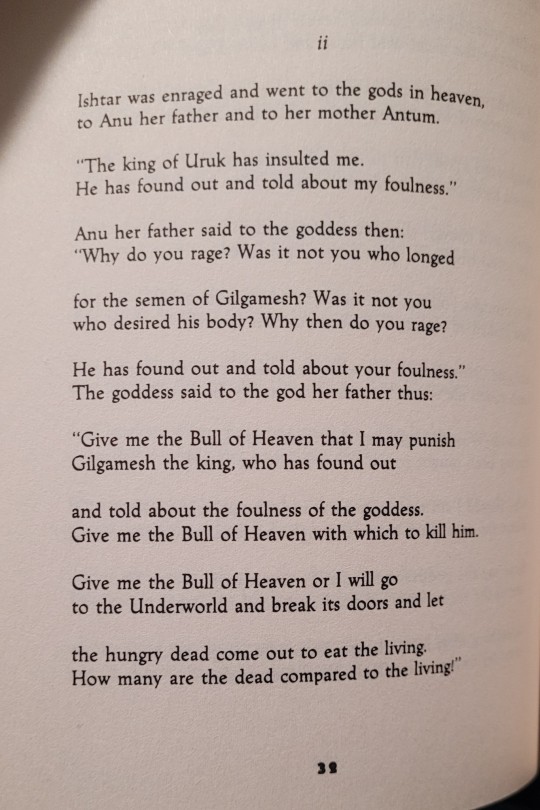
Ishtar is literally just the unholy fusion of Aphrodite and Mona-Lisa Saperstein
"Daddy, that mean boy Gilgamesh rejected me and told everyone that I'm a nasty ho that murders all her exes"
"Well, aren't you?"
"YES but you have to give me the Bull of Heaven so I can punish him for saying it. Give me the Bull of Heaven RIGHT NOW or I'm going to literally destroy the world"
15 notes
·
View notes
Text
Azura’s real world inspirations can be split between hypothetical Dawn and Dusk Aspects. Note that all of these can be purely coincidental and this is all speculation on my part.
The “Dawn” aspect is what i’d say became of the basis for her original appearance in Daggerfall. At that time, she was simply a goddess of vanity and egotism, though I’d argue she was also associated with at least dawn at that time through her “crimson gate” and summoning date being 21st of First Seed(more on that later). To me, there’s an obvious inspiration of Aphrodite immediately apparent, but I think it goes even deeper that it might appear on the surface. Perhaps the bulk of these inspirations didn’t come until later, but I think Azura finds inspiration from two of Aphrodite’s theorized origins as well.
The first is the one most obviously tied to Azura. Inanna is the Sumerian goddess of Love and War. She is heavily associated with Venus aka the Morning Star and is also known as the Queen of Heaven. Some important symbols of hers are the eight-pointed star, a rosette, and a lion. Inanna’s cult would have her become known as Ishtar, Ashtart, Astarte, and eventually Aphrodite as it moved from place to place. Even her associated planet would take the name of her Roman equivalent Venus. Her sphere of influence would also change though, as she lost pretty much all ties to War instead becoming strictly tied to Love and Beauty. Although, she would later regain her ties to the heavens as Aphrodite Ourania.
The second origin is one that’s more theoretical than the first with less evidence overall. It’s that Aphrodite at some time split from Eos, the Greek dawn goddess with both being part of the long lineage of a proto-indo-European dawn goddess called Hewsos. This is notable because other deities within this lineage also lay claim to spring with one recognizable name being Eostre/Ostara. This lines up with Azura’s summoning day being the tamrielic equivalent to the first day of spring: the 21st of First Seed aka March.
Azura combines these two origins to create an Aphrodite that adds influence that she lost over time and mixes in spheres her relative goddesses would later gain.
Her later associations with magic, prophecy, and fate would come from a third inspiration of Hecate. Hecate’s influence on Azura are what I’d call her “Dusk” aspect. Boundaries and transition, Magic and the Moon(s). None of these were in Daggerfall (aside from the aforementioned “Crimson Gate”) but would become central to Azura in later games. I’d say this Dusk aspect is best shown in Khajiit lore and is solidly Azurah in contrast to Azura as explored before.
Like Azurah, Hecate was said to hold domain over liminality and thresholds (The rim of all holes). Hecate was also pictured with keys that could unlock the boundaries between worlds which Azurah has a direct nod to in Khajiit mythos. Azurah has also taken the triple body form which can be directly seen in ESO in the Ashen Scar door. Another interesting aspect is that, as well as having three bodies, Hecate was also part of a triple-deity group of the moon with Luna/Selene and Diana/Artemis. This is notable because Azurah herself holds power over the three moons of Nirn.
Another interesting aspect is that Hecate is associated with the underworld and protecting mortals from harmful spirits. Azurah accomplishes both of these. She maintains the lunar lattice to protect Nirn from adversarial spirits and sends her champions into the Void to redeem the Dro’mathra. She also acts as an arbiter of dead Khajiit in this aspect.
I don’t really have a closing or final thesis for this I just thought it was interesting lol. If there’s three Azura’s like there’s three Hecates, maybe the third Azura is just the mixture of both aspects in balance? Idk.
8 notes
·
View notes
Text
Exploring Religious Syncretism

As-Salam-u-Alaikum wa-rahmatullahi wa-barakatuh (“Peace be unto you and so may the mercy of Allah and his Blessings”)!
Religious syncretism is the practice of blending two or more religious beliefs. This phenomenon has occurred throughout history and has given us a plethora of diverse religious beliefs, rituals, and customs. Religious syncretism often occurs from assimilation and conquest. However, its origins are not always born from negative events; syncretism also comes from cultural exchange, trade, and other peaceful interactions between different religious communities.
The Ancient Origins of Religious Syncretism:
One of the oldest examples of religious syncretism is that of Ishtar. Ishtar was an ancient Mesopotamian goddess of fertility, love, and war. There is a list, known as the “Ishtar Tablet” which lists the names of other goddesses that are syncretic equivalents to Ishtar. Syncretic examples of Ishtar include Innana, Astarte (who is mentioned in the Old Testament and is my cat’s middle name), and Aphrodite.
Key Examples of Religious Syncretism:
Interpretatio Graeca/Interpretatio Romana: Ancient Greece would often try to identify foreign deities by using their own pantheon. Rome would do this same practice, especially with the Celtic pantheon. For example, Sirona is the name of a Celtic goddess. However, she was often paired with Apollo “Apollini et Si/ronae.”
Ancient Egyptian Religion: Syncretism was frequent in ancient Egypt. The god Amun and the god Ra were combined into Amun-Ra. Ancient Egypt would also combine their gods or goddesses with those of neighboring civilizations. For example, Osiris would be combined with Helios or Zeus. Whether the combination is due to religious similarities or political gain is up to historians.
Christmas Trees: Anyone familiar with the Gospels will tell you it never mentions evergreen trees or ornaments or even Santa Clause. However, these are iconic aspects of Christmas season. The Christmas tree finds its roots in pagan religious practices. The evergreen being a symbol of life in a dark, lifeless time.
Challenges and Controversies:
Critics of religious syncretism claim that it raises questions about authenticity, purity, and the preservation of traditional practices. Some religious purists may view syncretic movements as heretical or impure, leading to tensions within religious communities, even going so far as saying religious holidays are “fake” if they are touched by syncretism.
The Significance of Religious Syncretism:
Despite the critics, religious syncretism is still incorporated into most of today’s societies, religious or not. It’s clear in the examples given, but also in the names of the days of the week (Norse paganism), names of some of the months (Roman paganism), the workday/weekend schedule, etc. Ignoring thinks simply because they have been affected by syncretism is, in my opinion, silly.
For those of us trying to find some divine meaning in our lives, syncretism can show us the overlap of everyone’s beliefs. Personally, I always hated the idea that there is only one, chosen group of people that have had the truth revealed to them. The Qur’an tells us the names and stories of some of the prophets, but not all of them. Messengers have been sent to all ends of the Earth, to all people. Their messages just get lost in time and change into different religious beliefs (almost like a giant game of telephone). In my opinion, by seeing the reoccurring themes throughout religions, such is flood stories or “golden rules” that are prevalent in many belief systems, syncretism is just one of the many tools we can use to find the “truth.” Additionally, I personally see syncretism as a way for people to see how their beliefs are not so different from others.
Conclusion:
In a world characterized by globalization and cultural exchange, religious syncretism continues to shape the spiritual landscape, offering a glimpse into the rich tapestry of human belief and practice. By embracing diversity and dialogue, we can appreciate the beauty and complexity of syncretic traditions, fostering mutual understanding and respect across religious boundaries.
3 notes
·
View notes
Note
I had a friend say that Hecate and Ishtar are actually the same goddess. In your research do you find this to be false or have you ever heard of this comparison? If so how would you prove this person wrong?
First: I apologize, I don’t know when this came through. I did not receive a notification from Tumblr.
To your question, the TLDR upfront: Academically, I have no evidence to suggest they are the same or even all that similar. I have not heard of this claim before this question. I don't think "proving them wrong" is fruitful.
To explain:
Hekate is often compared to dark goddesses (such as Morana, Lilith, Kali, etc) but that doesn’t mean they are the same being. “Equivalence” in this context means “similar” or “performing the same function” - it does not mean they are the same entity. This is a distinction that often is often lost when we talk about the religion of ancient cultures - and especially those cultures that interacted with and influenced each other. Religion is fluid, not static, and the stories and characterization change over time. Syncretism of similar deities (such as the Greek and Egyptian Isis and Dionysus) can occur between cultures that have a great deal of activity with each other over a long period of time - to which we have ample evidence thereof. Moreover, human belief tends to "rhyme"; we see and generate similar themes in response to our environment, the way we live, and who we interact with. This creates such phenomenon as multiple cultures with chthonic earth mother-goddesses (and their later displacement by sky father-gods of invading peoples). It's not unreasonable for us to create or recognize similar patterns in different places. However, just as we wouldn’t claim that the Greek Demeter is the same as the Nordic Sif because they both hold domain over wheat, so too should we resist consolidating every goddess with a similar aspect. It diminishes and strips away Her cultural and historical context in the process. This is monolithic thinking.
But then, I would question what similarity is being drawn between the two in question, exactly? Ishtar/Inanna (as they became syncretized during the reign of Sargon of Akkad) was an Akkadian (modern day Iraq) sex-cult goddess of war. Characteristically she has more in common with the Greek Aphrodite (though I would not consider them the same). Her worship can be attested between roughly 3000 BCE to 1600 BCE. The earliest record of Hekate is in Hesiod's Theogony in C 8 BCE, and up until at least the post-Christian Chaldean Oracles (C 2 or 3 CE) and her influence spanned primarily Greece, Rome, and Anatolia (modern day Turkey). There isn’t a great deal of overlap, and no suggestion of syncretism between Hekate and Ishtar.
For my small part of research, the claim seems to stem from a tenuous echo of Inanna's descent into the underworld to retrieve her lover, Tammuz, with Hekate’s escorting Persephone to and from Hades. This, and Hekate’s association with the moon and childbirth (not sexual love/fertility; "fertility" being a loaded term flung haphazardly at just about any female deity), just as Diane/Artemis has an association with the moon and childbirth (both virgin goddesses Hecate and Diane appearing on the Pergamon tablet) is, again, tenuously compared to Inanna/Ishtar's aspect of the moon and "fertility" (sexual love and the fecundity of dates, specifically). However, Inanna/Ishtar is more extensively associated with the planet Venus (perceived then as a star) than with the moon - she formed a triad with Shamash (the sun god) and Sin (the moon god). Her symbol is an eight pointed star. Ishtar/Inanna is primarily a goddess residing in the heavens (what the Greeks would call ouranic) while Hekate is most often associated with earth/underworld (chthonic). I have found no significant similarities. Essentially: what is their claim, exactly, and what is their evidence to support it?
Finally, are they arguing this from a position of intuition/faith, or from a position of academic study? If their claim is academic they must have proof thereof and have scrutinized their sources. But it is utterly fruitless to argue that there is no, or little, or controversial, evidence to support a claim if they feel it is spiritually correct. Intuitively, I associate Hekate with Baba Yaga. There is no historical evidence linking them together, it simply seems right to me. What is intuitively true for me may not be spiritually true for someone else and visa versa; arguing the point will only inspire zeal and tension. And, ultimately, question whether or not zeal is what's motivating you to "prove them wrong." Are you reacting from a place of academic rigor (in which case you should be prepared to have that challenged and altered to new/better evidence) or are you reacting from a place of differing religious belief? Which scenario makes it appropriate for you to “debunk” your friend? And, if it’s not really the belief but their attitude that is causing rancor, evaluate that.
65 notes
·
View notes
Note
Hey yama, I wanted to ask what you think are the biggest examples of misinformation OSP has spread in their myth videos?
Well, the Ishtar section of the underworld myths vid comes to mind, it's a nightmare:
1. calls Ishtar's Descent "four thousand years old" and "Babylonian." It's probably around 3000 years old, and soundly Assyrian, with no copies known from Babylonia. Now, Inanna's Descent - that one IS around 4000 years old and Babylonian (oldest copies come from the Isin-Larsa period).
2. claims Epic of Gilgamesh forms a "backstory" of this myth which applies a very modern popcultural notion of continuity (and it doesn't even work well tbh since Epic of Gilgamesh pretty clearly presents Tammuz as already dead)
3. i would personally not call a derivative of technically genderless beings made out fingernail dirt from the Sumerian original " lgbt representation"; that is not the term used in the vid but i do not like to use a certain word which starts with q because it's closest equivalent in my native language has... incredibly unsavory implications i'd rather not discuss. This is not the fault of the vid itself but it also created the false notion common online (relatively speaking) that Ahushunamir was "the frist nonbinary person" on record or whatever which, putting aside what I said above, strikes me as dubious because you have the likes of Shaushka and Ninsianna, who by modern standards imo count as genderfluid, in Ur III period records already, and also have the bonus of being major, popular deities and not Fingernail Dirt Expandable Artificial Beings (note we sadly cannot really extrapolate this into assuming acceptance for similar gender expression in everyday life, otherwise we'd have to assume most women in ancient Mesopotamia were literate, since most goddesses are described as literate)
The Aphrodite vid is also bad:
1. "Astarte is also Ishtar" is simply not true. Ashtart is attested in Mari independently from Ishtar in Akkad in the 3rd millennium BCE (I think I got a confirmation from W. G. Lambert's old review of Penglasse's book?). The names are cognate, sure, but this is like saying "Zeus is Tyr" ultimately.
2. Lies about the Kumarbi myth in many, many ways at once:
a) Kumarbi is HURRIAN, not Hittite. The myth was TRANSLATED into Hittite but so was Gilgamesh and a story about El and Athirat, does not make them "Hittite" myths in origin.
b) the myth is not about "birth of Ishtar," it's about the birth of Teshub. Now, Hurrian Shaushka IS the sister of Teshub, and Song of Silver does imply her (or their, since Shaushka proudly shows up both among gods and goddesses on the Yazilikaya reliefs and, as remarked by Hurrian texts themselves, possessed "male attributes" and "female attributes" at once, despite usually being referred to as a goddess) father is also Kumarbi, but we have no account of her birth. Shaushka was regarded as analogous to Ishtar - "Ishtar of Nineveh" or "Ishtar of Subartu" - but so were other goddesses. Does not make them the same as Ishtar. While the gender non-conforming ventures and interest in love and war are shared between both, Shaushka lacks Ishtar's astral aspect but has a healing role which Ishtar lacks, for instance.
I remember seeing people point out the Dionysus takes in their vids are... quite something so that surely qualifies too.
21 notes
·
View notes